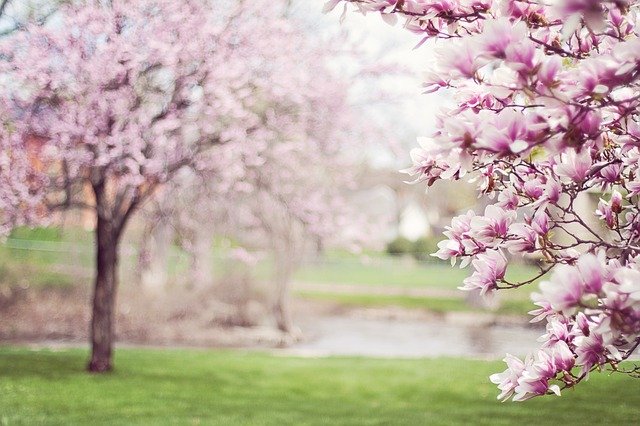Now that Spring has sprung, it is time to place an emphasis on the seasonal plumbing problems that may arise. The temperate weather conditions that we all so enjoy during this time of the year provide us with much-needed relief from the dark, gloomy days, the icy roads, and the freezing temperatures; however, these abrupt changes combined with the occasional springtime cold snap and/or shower could result in many problems with your plumbing system. In this guide, you will be introduced to the most common springtime plumbing issues.

1. The Development of Leaks Throughout the Plumbing System
During the winter months, the plummeting temperatures may result in the contraction or freezing of the pipes through your plumbing system. Unfortunately, these events may result in the development of small cracks. When the weather turns to warm temperatures, that warmth causes the expansion of those same pipes. In turn, this will result in any developed cracks that occurred during the winter growing larger.
If this happens, you may notice standing water, drips coming from your pipes, an odor that is musty, or an increase in your water or electric bill – depending on your water source. An inspection should be performed. If a leak is found, it should be resolved immediately to prevent the growth of mold, water damage, and future complications.
2. Water Pressure Becomes Poor
In most instances, poor water pressure stems from a leak in the plumbing system throughout your home. To evaluate the system, you will need a plumber. The professional will be able to inspect to determine if a leak is present. The plumber will evaluate the inside pipes and outdoor pipes. If a leak is discovered, the plumber will be able to resolve the issue quickly.
During the spring months, it is common to experience showers and storms. The water from the rain is exceptionally heavy and may cause the soil around your home to become drenched. When this happens, stress may occur on the pipes of your plumbing system that are situated underground. This could lead to the development of a leak that could cause poor water pressure.
3. Slow Drainage and Pipe Back-Ups
If the soil becomes drenched and heavy due to heavy rain, pressure may be placed on the pipe or pipes that come from your home and go to the sewer. This could result in many complications. The main being slow drainage in the sinks, toilets, tubs, and showers of the home, back-ups in any of these products, and even your lawn becoming flooded with sewer water.
In addition to this, the spring months produce warm weather that is known to promote the growth of plants, trees, shrubs, and other types of vegetation. If a drain line is cracked and a root starts to grow within the pipe, it could result in the development of a potentially serious blockage.
Additionally, all that water that makes its way into the soil where a cracked pipe is located could find its way into your septic tank. All of these issues could result in slow drainage and pipe back-ups. If you experience slow drainage or the backup of pipes in your home, contact a plumber immediately for assistance.
4. The Failure of a Sump Pump
If you have a sump pump in your basement, you know that it is not an appliance that typically runs during the winter months. This is because of the freezing conditions that are common during that time. When spring arrives, the rainwater arrives and may result in basement flooding. The pump is then turned on to clear the water.
Many find that this fails upon the initial turn-on. If the basement water is not cleared immediately, it could result in water damage to the home’s foundation and other structural complications. If maintenance or replacement is needed, that must be handled immediately.
5. Poor Outdoor Drainage
As the snow starts to melt and the rains of spring start to fall, you may find that your property is not draining effectively. In turn, water may start to pool around the foundation of your home and over exterior pipes that are in the ground. If this is the case, you should seek help immediately. Failure to do so could result in foundation problems, pipe problems, and other types of plumbing issues.
In most instances, a landscaper will be able to assist in getting the water moving. In some instances, though, you may need a plumbing inspection just to ensure that no issues are developing with your pipes that could result in complications.

How Can I Get My Plumbing System Ready for Spring?
The good news is, there are several tips and techniques available that will help you prepare your home’s plumbing system for spring. The following will help you have an uneventful seasonal transition:
- Install and/or test the sump pump that you will use in your home.
- If you have hard water that could clump minerals together during the cold weather months and cause problems with your hot water heater, install a water softening system.
- Inspect and test all of the outdoor spigots and any sprinkler system that is installed on your property.
- Check the basement and other areas of the home regularly to ensure that no leaks have developed. If so, have them fixed immediately.
- Check all of the water valves in and around the home.
- Inspect the toilets, sinks, tubs, and showers in your home for leaks.
- Ensure that trees, shrubs, and other types of vegetation are not permitted to grow near your septic tank line and the tank itself.
- Have regular inspections, maintenance, and any necessary repairs performed regularly by a licensed plumber.
Contact Us Now
Are you having plumbing issues? Now that spring is here, it is that time. We here at Reynolds Plumbing are standing by to assist you. We are an efficient, cost-effective solution to all of your plumbing needs. For immediate help, contact us now.

